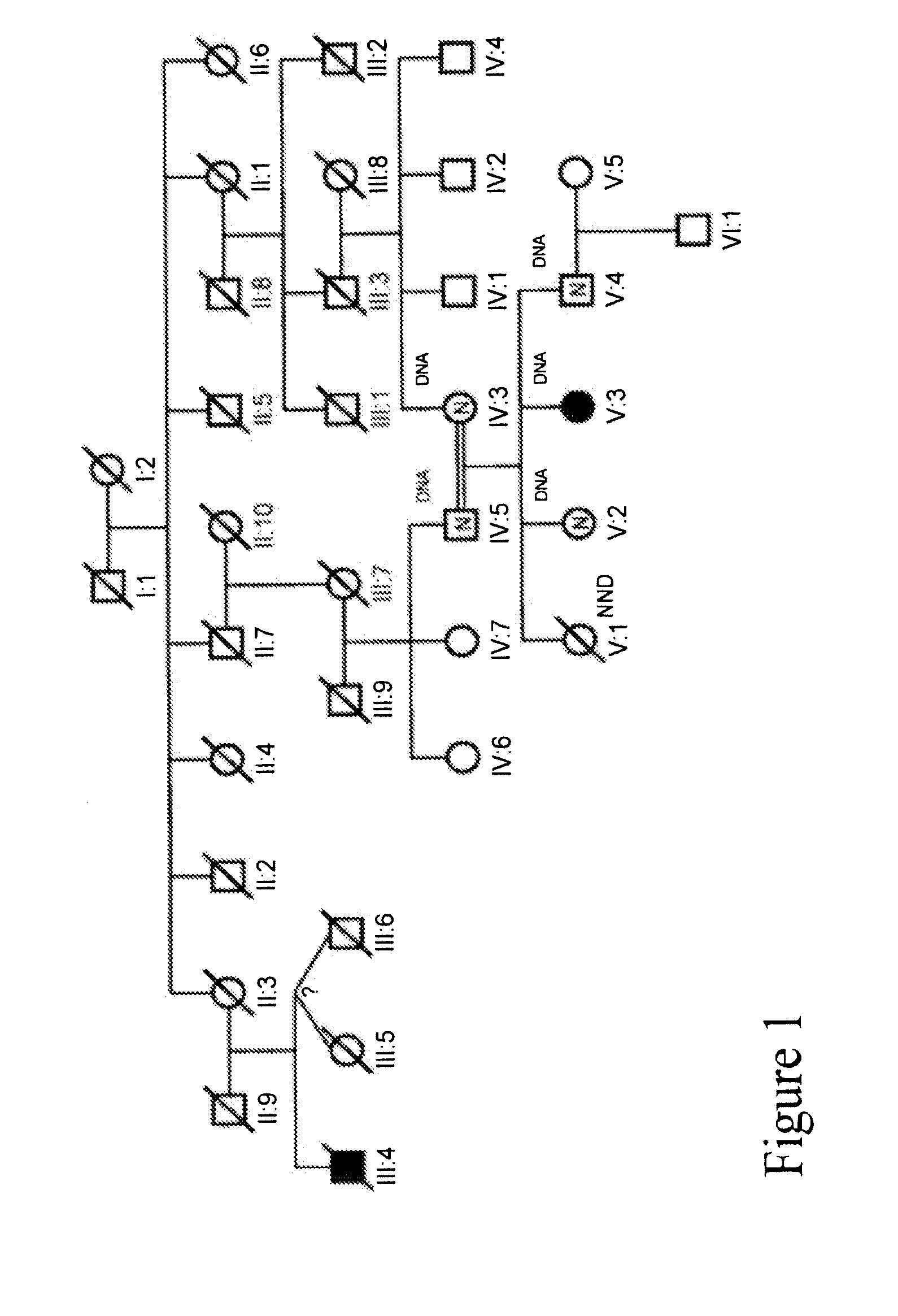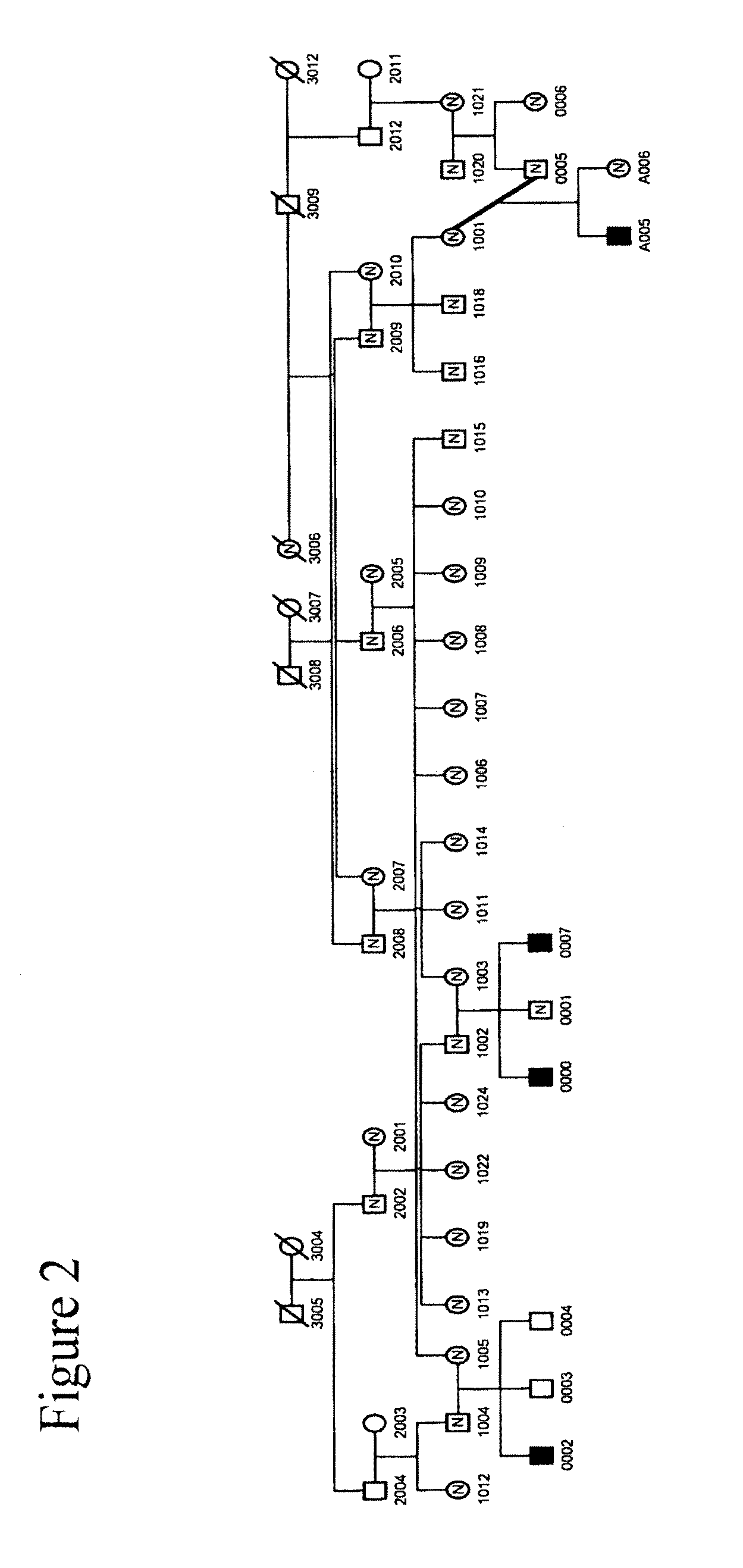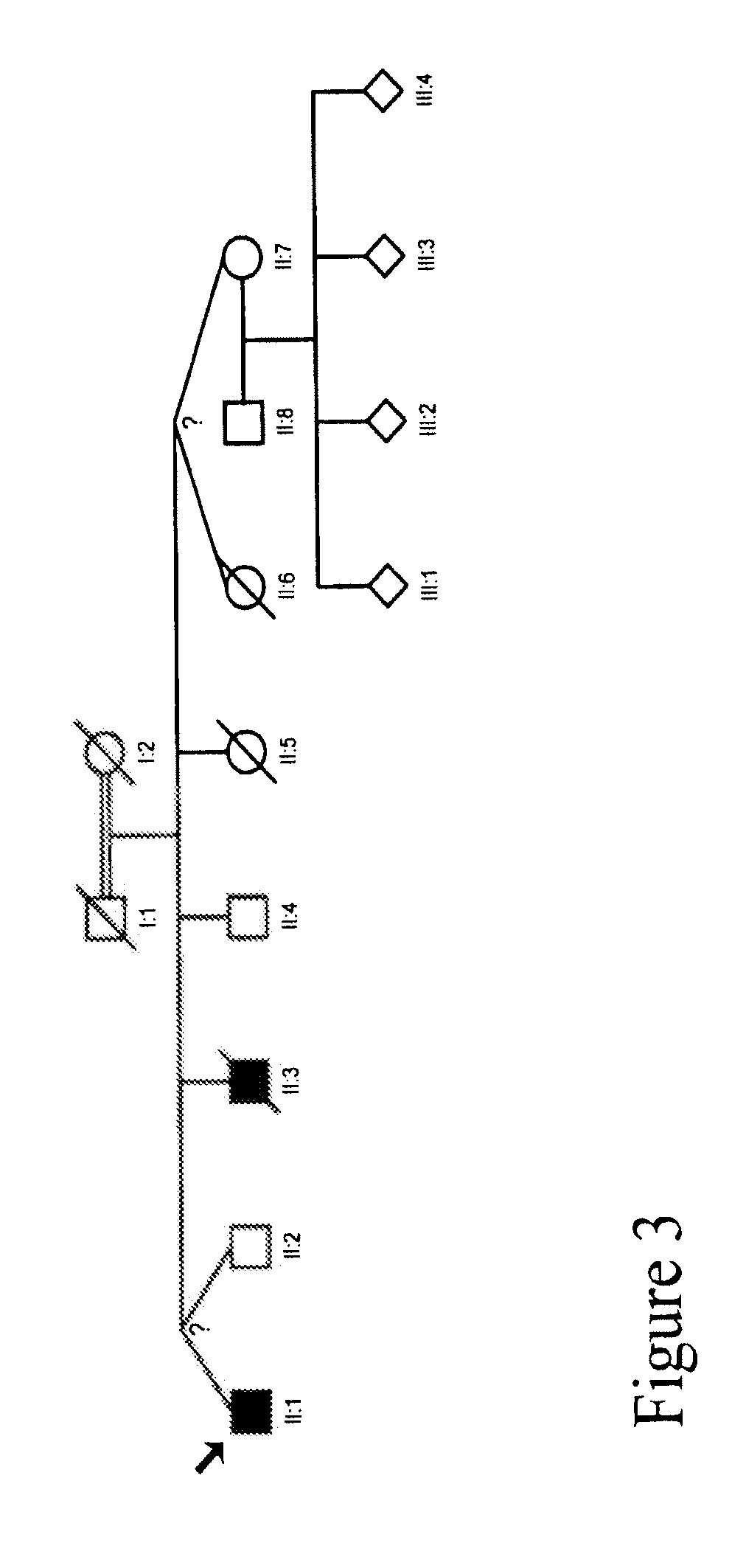Methods for identifying analgesic agents
a technology of analgesic agents and methods, applied in the field of methods for identifying analgesic agents, can solve the problems of affecting the ability of the body to synthesize prostaglandins, affecting the ability of the body to recognize common underlying genetic causes of disorders, and affecting the effect of drug us
- Summary
- Abstract
- Description
- Claims
- Application Information
AI Technical Summary
Problems solved by technology
Method used
Image
Examples
example 1
Identification of the Genetic Mutation Responsible for Congenital Indifference to Pain (CIP) in Humans
[0192]We collected a multigenerational family with 3 affecteds (CIP-14) FIG. 1 and a smaller family with 1 affected (CIP-10) FIG. 2 reported previously (Guillermo A. and A. Grinspan. 1970. Rev Neurol (Paris) 123 (6): p. 434-5.)
[0193]31 family members from CIP-14 were genotyped at 763 autosomal markers and at 48× markers. A genome-wide two-point analysis identified 8 regions with LOD scores >1.0. A region on chromosome 2 had two consecutive markers—D2S2330-D2S335—spanning 6 cM, with positive scores. A LOD score of 1.51 at zero recombination was obtained at D2S2330. Multi-point analysis of this region was consistent with linkage to CIP. The CIP-14 pedigree contains 3 affecteds, one issued from a consanguineous marriage, and two expected to share one allele identical by descent with the first case and one allele identical by descent between themselves. Because the pedigree comes from a...
example 2
RT-PCR Analysis of Relative SCN9A Expression
[0206]cDNAs from a variety of human tissues were used to perform relative quantitative RT-PCR with primers and conditions that specifically amplified the SCN9A transcript (FIG. 10). Experiments to determine the tissue distribution of SCN9A were performed with three separate primer sets. Dorsal root ganglia was included as a positive control and β-actin was included as an internal standard. We found highest levels of SCN9A relative to the β-actin standard in dorsal root ganglia and medulla oblongata. Lower levels of SCN9A product were detected in the samples from temporal lobe, thymus, hippocampus, cerebral cortex, amygdala, frontal lobe, spinal cord, occipital lobe, cerebellum, thalamus, and ovary. SCN9A expression was not detected in cDNA from parietal lobe, corpus callosum, cerebral peduncles, pons, thyroid, or placenta. The sequences of the RT-PCR products amplified from dorsal root ganglia and medulla oblongata were identical to human ...
example 3
Sequencing of Exon 190f Scn9a From Participants in Study
[0208]This was a phase 2a, randomized, double-blind, placebo-controlled, two-period crossover study to evaluate the safety, tolerability, preliminary efficacy and systemic exposure of topical application of compound A in subjects with post herpetic neuralgia. The purpose was to investigate the prevalence of the polymorphism (R1150W) mutation in exon 19 of the SCN9A gene in patients who participated in the Compound A-201 clinical study and determine if the presence or absence of this mutation correlated with responsiveness or non responsiveness in any of the efficacy measures investigated when treating these subjects PHN pain with Compound A ointment.
[0209]The polymorphism R1150W (rs6746030) is a mutation with a global population minor allele frequency (MAF) of 0.099 (dbSNP) and has been linked to increased pain sensitivity (F Reimann, et al., PNAS, Vol. 107, pp. 5148-5153 (2010)). It therefore constitutes a gain-of-function (GO...
PUM
| Property | Measurement | Unit |
|---|---|---|
| area | aaaaa | aaaaa |
| area | aaaaa | aaaaa |
| area | aaaaa | aaaaa |
Abstract
Description
Claims
Application Information
 Login to view more
Login to view more - R&D Engineer
- R&D Manager
- IP Professional
- Industry Leading Data Capabilities
- Powerful AI technology
- Patent DNA Extraction
Browse by: Latest US Patents, China's latest patents, Technical Efficacy Thesaurus, Application Domain, Technology Topic.
© 2024 PatSnap. All rights reserved.Legal|Privacy policy|Modern Slavery Act Transparency Statement|Sitemap



